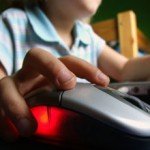Your kindergartner may use technology to complete activities in a range of subject areas, including language arts, science, social studies, math, and art. Integrating technology into the classroom with any of these subjects is a great way to tackle the first step in technological literacy: Using tools to solve problems.
Technology resources range from computers, software programs, and the Internet to digital cameras, camcorders, and voice recorders. Technology isn’t a teaching substitute, but a valuable aid that introduces children to new ways of thinking and working. Plus, it’s a great introduction to resources that your child’s likely to use in the future.
Technology use varies from school to school
Many states base their technology standards on the National Educational Technology Standards for Students. But because children aren’t tested on their use of technology, teachers are typically not held accountable for teaching them. That means technology use varies widely from classroom to classroom. Your kindergartner may have one or more computer workstations in the classroom, visit a computer lab once a week, or not use technology regularly at all.
To get the maximum benefit from technology, the best classrooms incorporate technology into regular lessons that develop students’ higher order thinking skills, promote creativity, and facilitate academic learning. Your child’s teacher may use technology to evaluate students’ progress, too.
Language arts
While you child is learning to read she may listen to books on CD or stories being read aloud on the Internet. She may also record her own stories on the computer. The class may have phonics and reading software such as Read, Write & Type! “When learning to read and write, kindergarten students may be practicing identifying letters and sounds on the computer,” explains our award-winning education consultant, Gayle Berthiaume.
Your kindergartner may use draw and paint software programs such as Kid Pix and AppleWorks to insert pictures that begin with the letter sound the class is learning. Your child may dictate or type captions for a picture she drew using draw and paint software. She may contribute to an “ABC” book or an “All About Me” book as part of a class project. She may make a slide or book page using pictures and text, with the help of the teacher. She will then observe the teacher putting students’ slides together to make a slide show or class book.
Your kindergartner will typically learn where the letters, numbers, and special keys are on the keyboard. The class may start off doing activities with paper keyboards. You can expect your child to learn to type her name and use the shift key to make a capital letter.
Math
Math concepts taught in class such as shapes and patterns can be extended with the use of technology. Your child may use draw and paint software programs to do a counting activity or create a pattern. He may use a computer template the teacher has created to group objects by attributes, such as size, color, and shape. Or he may be asked to extend a pattern, deciding which object comes next. Berthiaume notes: “The class may make a counting book using digital photos, numbers, and words.”
Science
Your child may visit science websites the teacher has bookmarked to further explore what is being taught in class. If the class is learning about farms, students may visit a website about farm animals. The class may also visit sites that bring scientific lessons to life, such as a simulation of a tornado. The teacher can also help students ask questions of scientists on the Internet.
Social studies
With email and programs like ePals, teachers and students are able to communicate with people from around the world. Virtual field trips may be taken to visit other countries or to step back in time to visit the colonial times. Berthiaume adds: “Kindergarten students may also use Kid Pix to illustrate a story or their learning of a topic such as fire safety.”
The arts
Using draw and paint software programs your child may draw pictures that connect to a unit they are learning about in class. A digital camera may be used to take pictures on field trips or in the classroom that can then be uploaded to a slide show. To learn about different artists, the teacher may show art work online. Your child’s teacher may publish students’ artwork by scanning pictures they’ve created and make an online art gallery.
What you might see in a well-equipped classroom
- Educational software that reinforces reading and math skills
- Interactive story books on a computer
- One computer or more in the classroom with access to the Internet and a printer
- Large-screen display connected to a computer used by the teacher to demonstrate a technology lesson to the whole class (If none is available, the teacher may have smaller groups gather around the computer to introduce a lesson or technology skill.)
- An interactive whiteboard, which is an electronic writing surface that can capture writing electronically






